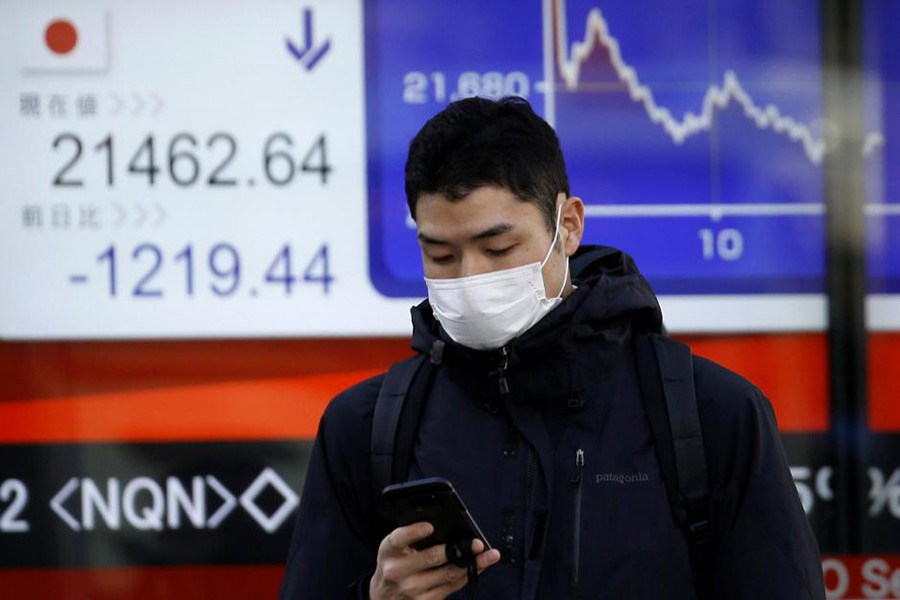Asian shares and US stock futures sank on Tuesday, after Wall Street suffered its biggest decline since 2011 as investors’ faith in factors underpinning a bull run in markets began to crumble.
S&P mini futures fell as much as 2.5 per cent to nearly four-month lows in Asia, extending their losses from the record peak hit just over a week ago to almost 12 per cent.
MSCI’s broadest index of Asia-Pacific shares outside Japan slid 3.5 per cent to a one-month low, which would be its biggest fall in more than a year and a half, a day after it had fallen 1.6 percent.
Japan’s Nikkei tumbled as much as 5.6 per cent while Taiwan shares lost 5.3 per cent at one point.
Australian shares dropped 3.0 per cent to their lowest since October while South Korean shares fell 3.0 per cent.
The rout came after US stocks plunged in highly volatile trading on Monday, with the Dow industrials falling nearly 1,600 points during the session, its biggest intraday decline in history, as investors grappled with rising bond yields and potentially higher inflation.
“The amount of the sell-off that we are seeing is normal. The speed at which we are doing it is not normal,” said Michael Purves, chief global strategist at Weeden & Co in New York.
“Where does the market rout end? I think we are pretty close to a selling climax here. I think we are pretty close. The fundamentals are pretty good. The only thing that is really different is that bond yields got up to 2.8 percent.”
The benchmark S&P 500 slumped 4.1 per cent and the Dow 4.6 per cent, suffering their biggest percentage drops since August 2011 as a long-awaited pullback from record highs deepened.
Before Monday’s fall, the index had not seen a pullback of more than 5 per cent for more than 400 sessions, which analysts said was the longest such streak in history.
“Since last autumn, investors had been betting on the goldilocks economy - solid economic expansion, improving corporate earnings and stable inflation. But the tide seems to have changed,” said Norihiro Fujito, senior investment strategist at Mitsubishi UFJ Morgan Stanley Securities.
The trigger for the sell-off was a sharp rise in US bond yields following Friday’s data that showed US wages increasing at the fastest pace since 2009, raising the alarm about higher inflation and with it potentially higher interest rates.
The 10-year US Treasuries yield rose to as high as 2.885 per cent on Monday, its highest in four years and 47 basis points above the 2.411 per cent seen at the end of 2017.
But a massive fall in share prices prompted an about-turn, and in Asian trade on Tuesday, it fell back to as low as 2.685 per cent.
Fed fund futures are now pricing in only two rate hikes this year.


